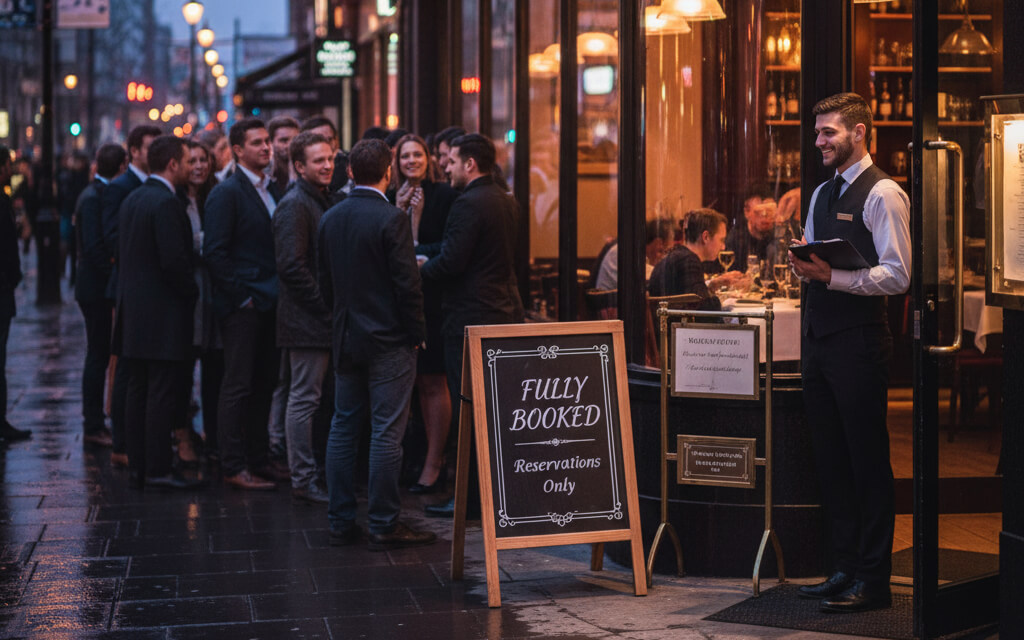October 06, 2025

Ever walk past a long line outside a small restaurant and feel an almost irresistible urge to find out what the hype is about? That’s no accident — it’s behavioral science and marketing working together. Long lines signal more than just good food; they reflect demand, scarcity, and social validation.
This article unpacks why people are willing to wait — and how your restaurant can create the kind of experience people are happy to queue for.
When access to something is limited, we want it more. That’s the scarcity principle in action — a powerful psychological driver that influences consumer behavior across industries.
When diners know there's a chance they might miss out, they're more motivated to wait — or come early next time.
Tip: Pair scarcity with a rewards program to deepen loyalty. As explained in Loyalty Programs That Actually Work, giving early access or perks to repeat guests not only rewards them but creates a tiered sense of exclusivity.
Humans are social creatures. If we see others lining up, we assume it's worth our time. Online, this behavior is amplified: a 4.7-star average rating and 500+ glowing reviews create digital lines that have just as much influence as physical ones.
A Harvard Business Review study found that businesses with strong social proof can experience 30%+ higher customer acquisition rates. That includes restaurants that make the review process easy, visible, and authentic.
People are willing to wait for more than just great food. They want a story, an experience, and something worth posting about. The most buzz-worthy restaurants don’t just serve meals — they curate moments.
When your space is "Instagrammable," your diners become your marketers. Use platforms like TikTok and Reels to tease experiences, as detailed in How to Use Instagram and TikTok to Drive Real Bookings.
You don’t need a celebrity chef or million-dollar campaign to generate demand. Many successful small restaurants use hyper-local, cost-effective tactics to build buzz and generate word-of-mouth queues.
Email and SMS campaigns are still king. Restaurants using email marketing effectively can increase repeat visits by up to 25%, according to Forbes.
For more grassroots tactics, see How to Market Your Restaurant on a Small Budget.
The line itself becomes the marketing. Curious passersby take photos, post to Instagram, and tell friends — generating a viral feedback loop that’s hard to manufacture through paid ads.
Restaurants can also use wait time to promote subscriptions, merch, or even gift cards — making every minute a branding opportunity.
A line once is great. A full house every week? That takes strategy.
The key is converting “line-hype” into long-term loyalty by collecting customer data, tracking feedback, and delivering consistently.
Over time, your long line becomes a flywheel of social proof, exclusivity, and engagement — one that doesn’t need expensive ads to keep spinning.
Whether you’re a cozy ramen spot or a trendy brunch bar, you can use behavioral psychology and smart digital tools to build demand — and yes, even lines.
When you understand what makes people want to wait, you can design a restaurant experience that feeds curiosity, boosts loyalty, and builds your brand from the ground up.
Stay up to date with the latest tips, expert insights, product reviews, and step-by-step guides to help you grow, create, and succeed—no matter your industry or passion.